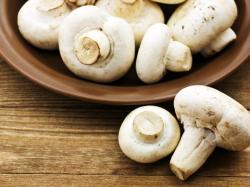A Boom In ‘Shrooms: Mushrooms Are Moving To The Center Of The Plate
February 9, 2012 | 1 min to read

Meet the newest superfood. It's not a meat, not a vegetable, although it can successfully pass as either. Technically, it's a fruit, although you'd probably never guess it; it is, after all, the fruit of a fungus and looks nothing like any fruit seen on American shores. Still, its earthy, musky flavors delight palates the world over. Remarkably versatile, the mushroom ranges from humble to haute, can hold its own at the table or donate all its taste and texture to plate mates such as pasta and risotto.
To its list of virtues, now add another: The mushroom, even that pale white cellophane-clad staple of the supermarket, is a powerhouse of nutrition and extranutritional goodies.
Over 2,500 species of mushroom grow naturally around the world, but the popularity prize belongs to Agaricus bisporus, the species that yields the most widely consumed varieties: button mushrooms; their more darkly shaded sibling, the cremini; and their fully developed version, the expansive portobello. While A. bisporus lends itself to commercial cultivation, many mushroom types, including morels, porcini, and chanterelles, do not. They must be harvested in the wild, and connoisseurs around the world make a point of knowing–but rarely telling–just where and when to search for them.
To read the rest of the story, please go to: Psychology Today Magazine, Premium Health News Service
